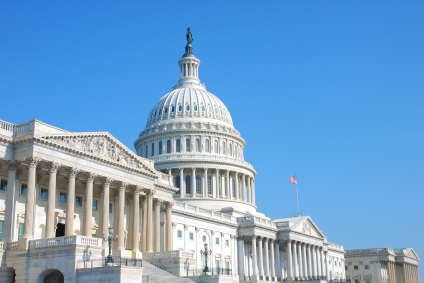
Traditional forms of analysis may underestimate unemployment costs, skewing cost-benefit analysis of regulations.
Do we really know how much regulations cost?
When regulators calculate the value of proposed regulations, they typically employ a cost-benefit analysis (CBA) that compares the net benefits of the rule with the compliance costs borne by the regulated industry. If the benefits outweigh the costs, the regulation is viable. New research, however, suggests that a simple CBA, which does not account for losses in human capital suffered by laid-off workers, may significantly underestimate the costs of some regulations.
In 2012, Jonathan S. Masur and Eric A. Posner of the University of Chicago Law School published an article arguing that unemployment costs should be incorporated into CBA in order to produce more complete cost-benefit analyses. Now, in their chapter in the new book Does Regulation Kill Jobs?, Masur and Posner reassert that thesis, adding responses to criticism and a fuller exploration of the nature of regulatory costs and incentives.
Masur and Posner’s favored approach would include the welfare losses workers face as they transition from a position of employment to one of unemployment: so-called “hedonic” or happiness costs, the costs involved in searching for a new job, and the costs associated with loss of marketable skills.
Although many economists and policy makers have ignored unemployment costs to workers, assuming them to be relatively small, Masur and Posner estimate that the average cost per laid-off worker is $100,000 in wages over the course of a lifetime. Moreover, unemployment is associated with higher rates of illness and even reduced lifespan. Those who depend on the laid-off worker for support may also experience reduced welfare. In some cases, the net costs to workers of new regulations may be substantial.
Failing to incorporate these costs in CBA, the authors urge, may result in regulations that appear—within the bounds of standard CBA—to increase social welfare when in reality the costs incurred by laid-off workers, combined with other costs, outweigh any welfare gains.
Including unemployment costs in CBA, as Masur and Posner suggest, would not change many regulatory decisions. The benefits of the Clean Air Act, for example, are estimated to be between $160 billion and $1.6 trillion, while the unemployment costs are figured around only $9 billion. In the face of such enormous social benefits, the costs associated with unemployment do not present a major obstacle. In other words, even accounting for unemployment costs, the regulation remains viable.
But including unemployment costs in CBA for some regulations will change the calculus. Masur and Posner examine an EPA regulation impacting the paper industry. The estimated benefits of the regulation sum to nearly $160 million, but in addition to compliance costs the rule was expected to result in the loss of almost 6,000 jobs. When the costs associated with unemployment are incorporated into the analysis, the net benefits of the regulation were reduced to negative $411.6 million. In a case like this, failing to account for unemployment costs results in flawed CBA, argue Masur and Posner.
One objection to Masur and Posner’s contention that the costs borne by workers should be included in CBA is that the same costs are already accounted for in industry compliance costs. This objection contends that when a firm lays off a worker it recoups savings equivalent to the worker’s loss, resulting in a double-counting problem.
Masur and Posner refute this criticism by emphasizing that a firm does not actually save money by firing an employee. Profit maximizing firms will not retain employees who cost (in wages and other benefits) more than they earn (in productivity) for the firm. Therefore, an employee must be worth more to the firm, at a given level of output, than she is paid. Hence, there is no double-counting problem.
Another criticism is that including unemployment costs in CBA might lead regulators to overestimate costs, particularly in industries that generate harmful, but difficult to calculate, externalities. This attack focuses on the prospect that some industries may not achieve any social benefits because whatever benefits they produce are offset by externalities, and should therefore be regulated out of existence.
But Masur and Posner maintain that just as unemployment costs should be calculated in CBA, so too should the benefits of an industry to its workers be accounted for with the benefits of the industry as a whole. In situations where aggregate benefits outweigh total costs, regulating an industry out of existence may reduce social welfare.
Expanding on their contention that unemployment costs should factor into CBA, Masur and Posner round out their chapter arguing that traditional assumptions about the so-called first- and second-order costs of regulation are not a compelling reason to eschew calculating unemployment costs in CBA.
Put simply, first-order costs associated with regulation are those costs that result directly from the regulation, with no intermediate cause. The cost of installing special filters on polluting smokestacks is an example of a first-order cost. Second-order costs are somewhat harder to nail down—they often result from regulation but may include an intervening cause. But they are real costs nevertheless and Masur and Posner claim that no coherent argument justifies excluding them from a cost-benefit analysis. The cost to an employee of searching for a new job once laid off is an example of just such a second-order cost.
This essay is part of The Regulatory Review’s six-part series, Does Regulation Kill Jobs?



